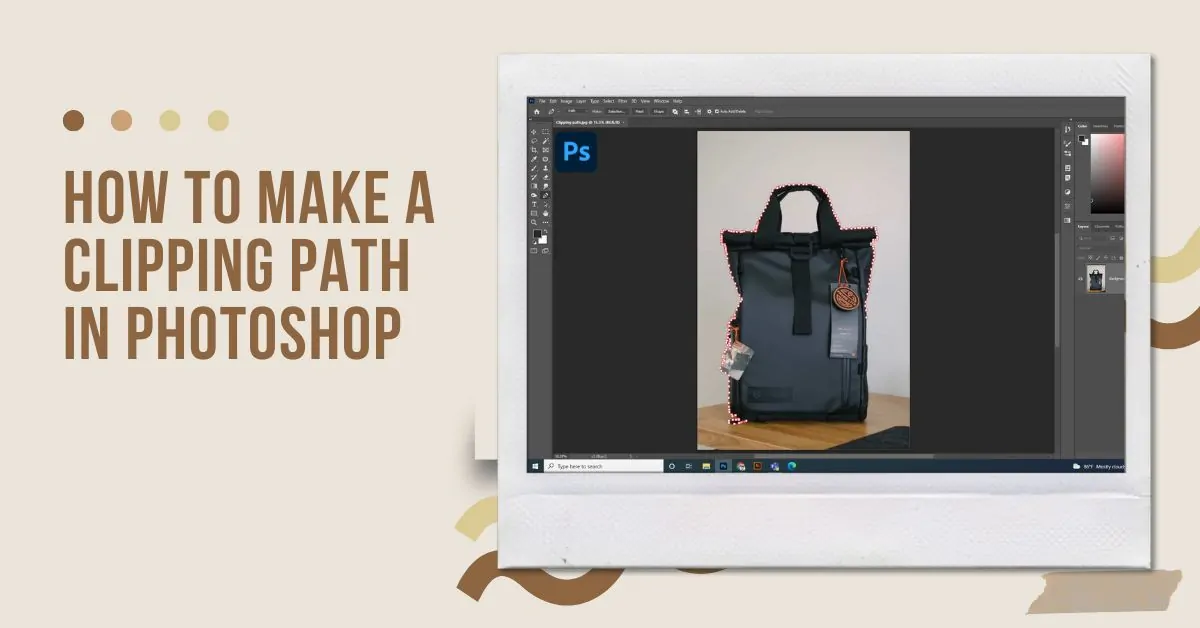Mastering the clipping path method in Adobe Photoshop is a talent that may greatly improve your graphic design abilities. This thorough book is your ticket to the complex world of clipping paths, whether you’re a beginning designer trying to maximize the possibilities of this formidable tool or an experienced expert looking to hone your skills.
The capacity to build and edit clipping paths for anything from e-commerce to advertising, and everything in between, is at the core of Photoshop’s toolbox.
We shall clarify the idea of clipping path services and solve the puzzles around clipping paths in this in-depth article. Along with teaching you the finest techniques for getting faultless results.
Join us as we explore the tools, tactics, and insights that will enable you to produce gorgeous images and optimize your creative process. From their humble beginnings to cutting-edge methodologies. Prepare to master the art of the clipping path in the world of graphic design.
Contents
- 1 Understanding Clipping Paths
- 2 How to Create a Clipping Path in Photoshop: The Basics
- 3 Clipping Path Services: An Overview
- 4 Industries and Businesses that Benefit from Clipping Path Services
- 5 Affordable Clipping Path Services
- 6 Who Are Clipping Path Specialists?
- 7 Multiple Clipping Paths: Cutting-Edge Tech
- 8 Conclusion
Understanding Clipping Paths

What is clipping path in photoshop? A clipping path is essentially a vector-based contour or shape that is used to separate a particular area of a picture from its backdrop. It functions as a digital mask to specify which portions of a picture are translucent or concealed and which are visible.
The Pen Tool in Adobe Photoshop is the most often used tool for creating clipping paths. enabling designers to make exact, personal choices around certain elements or subjects inside an image.
The fundamental idea is similar to cutting a paper form with scissors; once the borders are established, just the contents of the shape are kept and the remainder is thrown away. This method in Photoshop is a potent approach to produce precise, clear, and crisp choices, making it a crucial talent for graphic artists.
Purpose and Applications
In several fields of business and design, clipping pathways have numerous uses. Some key applications include:
- Removing Background: Clipping paths are frequently used to remove backgrounds from photos, therefore isolating the topic for usage in advertising, product photography, and e-commerce listings.
- Designing Silhouettes: To achieve a strong and concentrated visual impression, designers utilize clipping paths to generate silhouettes of objects or people.
- Image cropping: By specifying a clipping path, designers may crop photos in a variety of unusual sizes and shapes, departing from the traditional rectangular confines.
- Image Masking: Clipping paths are instrumental in creating intricate image masks, allowing for advanced image manipulation and compositing.
- Color correction: Accurate color correction and modifications are made possible by isolating particular areas of a picture using clipping paths.
- Product Packaging: Clipping paths assist in exhibiting items against various backdrops, enhancing product marketing adaptability in the area of product design and packaging.
Evolution of Clipping Paths in Graphic Design
Graphic designers used manual methods like hand-cutting masks and rubylith overlays to make accurate selections in the pre-digital age. These time-consuming, labor-intensive procedures frequently produced erroneous choices.
The business transformed with the introduction of digital image editing tools, primarily Adobe Photoshop. With the introduction of Photoshop’s Pen Tool, designers now have a faster, more precise way to make clipping paths. With the help of this development, designers could now work with degrees of accuracy never before possible.
As Photoshop and other image editing tools improved over time, clipping paths expanded in functionality and accessibility. They are now an essential component of many different creative processes, including web design, advertising, photography, and illustration.
Why Clipping Paths is Crucial for Graphic Designers
More than merely a talent, clipping path mastery is a must for being proficient in contemporary graphic design. Why it’s important for graphic designers is as follows:
- Precision: Clipping paths enable pixel-perfect selections, guaranteeing the exact isolation of items.
- Versatility: The capacity to produce intricate forms and choices broadens a designer’s creative toolbox, enabling one-of-a-kind and striking creations.
- Efficiency: Clipping pathways reduce the need for time-consuming manual masking by simplifying complicated selections.
- Professionalism: Images with high-quality clipping pathways seem polished and elegant, which is an indication of professional design.
- Marketability: Clipping path designers are in great demand since companies from a wide range of sectors use their skills for product photography, marketing collateral, and other purposes.
How to Create a Clipping Path in Photoshop: The Basics
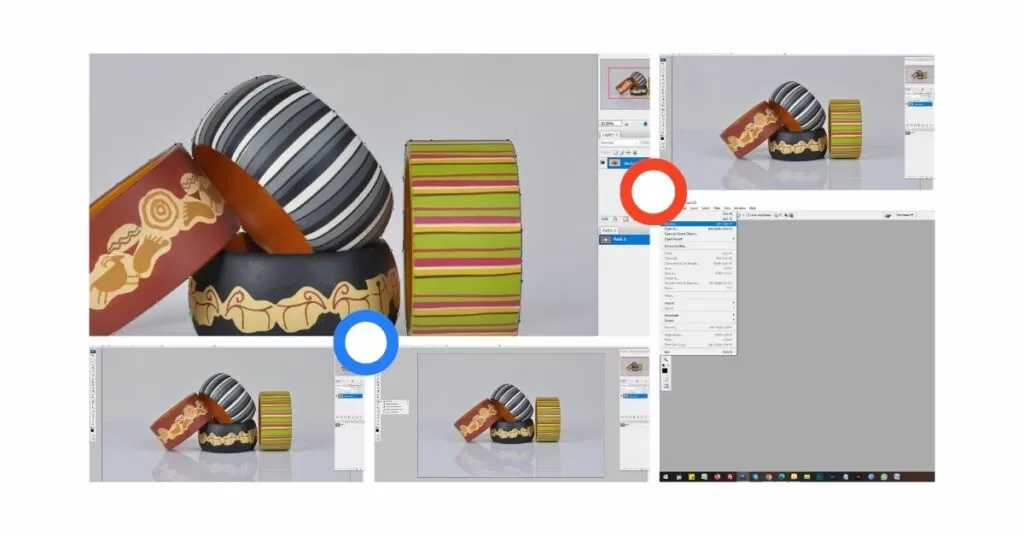
After setting the foundation for understanding clipping paths, it’s time to get down to business and explore the specifics of making a clipping path in Adobe Photoshop. This section will walk you through the necessary processes, provide advice on how to deal with typical difficulties, and present several approaches to achieve clipping path perfection.
Step-by-Step Guide on How to Make a Clipping Path in Photoshop
Here is how you can achieve the perfect photo in the clipping path using Photoshop:
1. Selecting the Appropriate Image
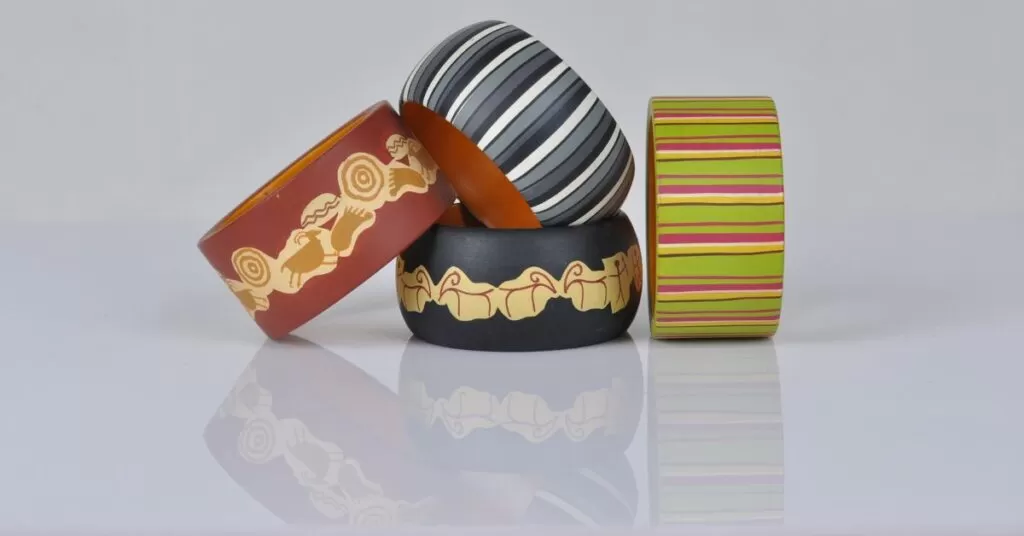
Make sure you have a picture that can be clipped before you start. The best images have distinct subjects that stand out against a well-defined background. Photos of products, people, and things on plain backgrounds do particularly well.
2. Opening the Image in Photoshop
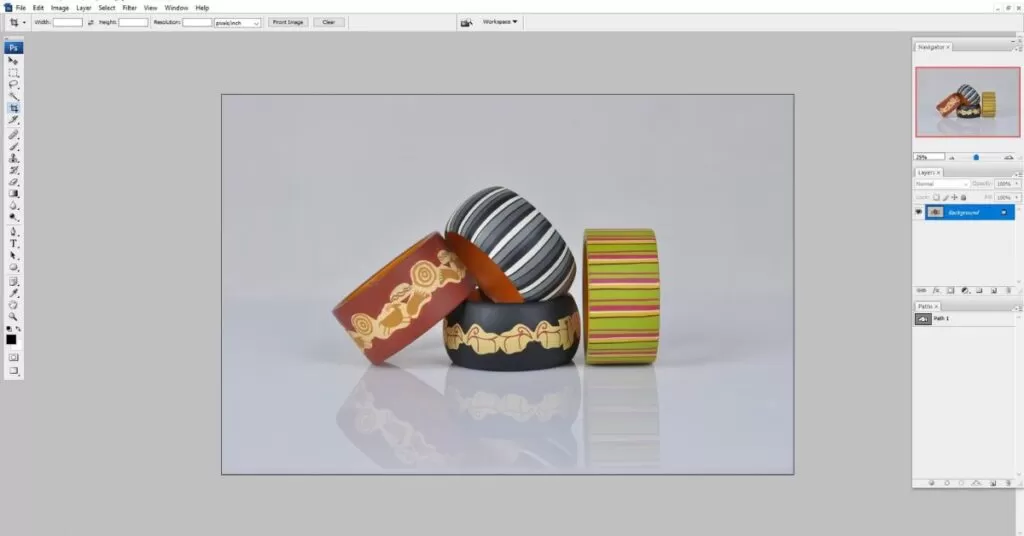
- Launch Adobe Photoshop.
- Select the image you wish to work on by choosing ‘File’ > ‘Open’.
- The workspace in Photoshop will open up with the picture.
3. Using the Pen Tool for Precision
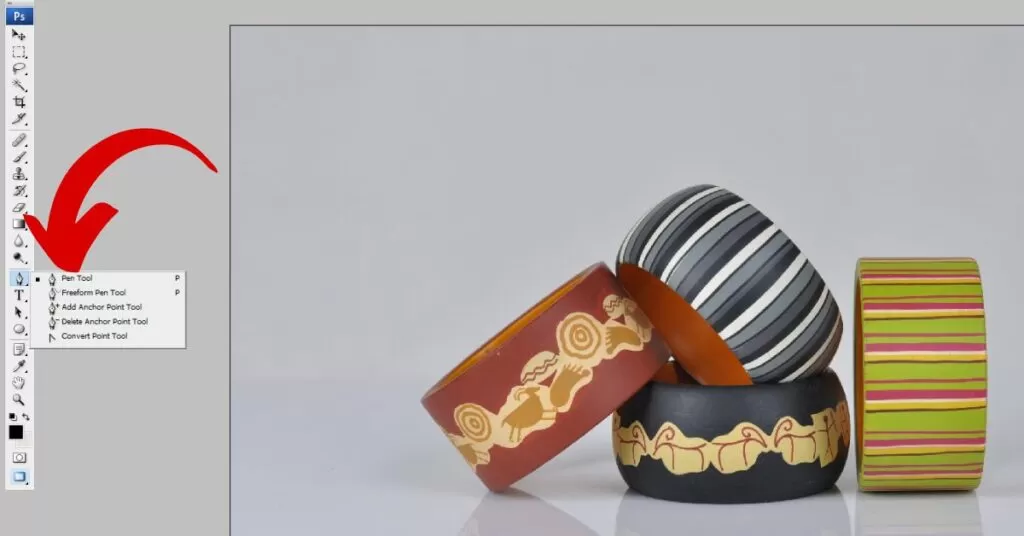
- The preferred tool for making exact clipping pathways is the Pen Tool. This is how to apply it:
- Choose the Pen Tool (shortcut: P) from the toolbar.
- For a closer look, zoom in on the area of the image you wish to cut.
- Create your initial anchor point by clicking, normally at the corner or beginning of the object you’re sketching.
4. Making Curves and Anchor Points

- Click again to add more anchor points that follow the curves of the object’s edges.
- You may alter the curvature of curves by creating Bezier handles by clicking and dragging the mouse.
- To perfectly fit the contour of the item, adjust the handles as necessary.
5. Closing the Path and Creating a Selection
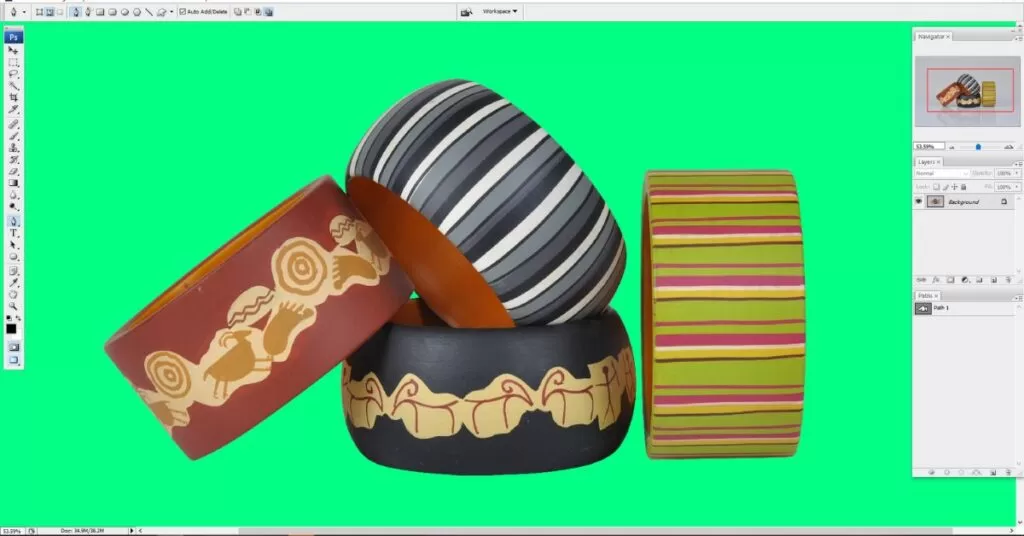
- Click on the starting anchor point to close the route. A closed path selection results from this.
- Make the selection by selecting it with the right mouse button.
- Adjust the “Feather Radius” (often set to 0) in the “Make Selection” dialog box before clicking “OK” to make the selection.
6. Applying the Clipping Path

- Select the option “Layer” > “New” > “Layer via Copy” while it is selected. This adds the specified object to a brand-new layer.
- The previous background can now be deleted or replaced with another image or background color as needed.
Common Challenges and Some Troubleshooting Tips
Clipping pathways may occasionally be difficult to create. Here are some typical problems and solutions for them:
- Complex Edges: For objects with intricate edges, additional anchor points and careful Bezier handle repositioning may be necessary. To be sure of correctness, take your time.
- Anti-Aliasing: Images with anti-aliased edges (soft edges) can be tricky. To fine-tune the selection, use the ‘Refine Edge’ tool, or use a layer mask to create less abrupt transitions.
- little Details: When creating anchor points, think about zooming in and utilizing smaller brush sizes for little details like hair or delicate patterns.
- Straight Lines: The ‘Polygonal Lasso Tool’ may be used to swiftly make a selection for objects with straight edges, such as boxes or rectangles.
Alternative Methods for Creating Clipping Paths While the Pen
There are several approaches for more straightforward jobs, even though the Pen Tool is the industry standard for drawing clipping paths:
Magic Wand Tool: Useful for selecting solid-colored backgrounds. Adjust tolerance by clicking the background, then narrow your choices.
Color Range: Based on color ranges, choices are made. Select the backdrop color by clicking on “Select” > “Color Range”, then make any necessary adjustments.
Fast Selection Instrument: works nicely for items that stand out against the background. Photoshop will attempt to pick the object if you paint over it.
Although faster, these alternatives could not offer the same degree of precision as the Pen Tool.
Clipping Path Services: An Overview
What is a clipping path service? Understanding the function and importance of clipping path services is crucial as we dig deeper into the realm of clipping paths. This section will give a general overview of clipping path services.
Including what they comprise, who they benefit, the benefits of outsourcing, and the important variables to take into account when choosing a service provider. The scope of clipping path services includes:
Image Background Removal: Removing backgrounds from images to isolate subjects.
Image Masking: Creating complex and intricate image masks for advanced manipulation.
Color Correction: Adjusting and enhancing the colors of objects within images.
Image Cropping: Cropping images in unique shapes and sizes.
Enhancing product images in preparation for e-commerce listings.
Digital retouching: The process of editing and retouching photos to raise their general quality.
Photo Restoration: Restoring old or damaged photos to their original state.
Industries and Businesses that Benefit from Clipping Path Services
Many different types of enterprises and sectors use clipping path services, including:
- E-commerce: To produce aesthetically appealing product photographs with plain backgrounds that make items stand out and draw buyers, online merchants and e-commerce platforms employ clipping path services.
- Advertising and marketing: Clipping paths are used by advertisers and marketers to improve promotional materials, provide eye-catching graphics, and design campaigns.
- Photography: Professional photographers often rely on the best clipping path services to improve the quality and aesthetics of their photos, especially in fashion and product photography.
- Publishing: For layout design, book cover development, and photo editing, publishing organizations use clipping paths.
- Graphic Design: Graphic designers leverage clipping paths for various design projects, from creating flyers and posters to designing websites and digital graphics.
- Real estate: To enhance property images, eliminate obtrusive elements, and boost aesthetic attractiveness in listings, real estate agents utilize clipping path services.
Benefits of Outsourcing Clipping Path Services
There are various benefits of outsourcing clipping path service providers to specialist companies:
- Experience: Companies offering clipping path services have a specialized staff of professionals who are adept in exact picture editing, providing high-quality outcomes.
- Time Efficiency: Outsourcing saves time and allows businesses to focus on core activities while professionals handle image editing tasks.
- Cost-Effective: Outsourcing can save money by removing the need to engage internal designers and buy pricey software.
- Scalability: Service providers can accommodate varying workloads, making it easy to scale up or down as needed.
- Consistency: Professional service providers maintain consistent quality across multiple projects, ensuring brand integrity.
How to Choose a Clipping Path Service Provider: Considerations
Several crucial considerations should have an impact on your choice when choosing a clipping path service provider:
Quality and Accuracy
Evaluate the provider’s portfolio and sample work to assess the quality of their clipping paths. Make sure the service can produce accurate results down to the last pixel, especially for complicated things. Examine regions with hair, fur, or elaborate patterns for attention to detail.
Turnaround Time
Find out how quickly the service provider can turn over jobs. Examine their ability to fulfill your deadlines, especially if you have jobs that must be completed quickly.
Pricing and Affordability
Compare the pricing policies of various service providers. Ensure that economical services don’t sacrifice effectiveness by balancing cost and quality.
Support and Communication with Customers
Evaluate the provider’s responsiveness and communication methods. Make sure they are reachable for questions, changes, and comments. A successful partnership depends on effective communication.
Affordable Clipping Path Services
Affordability is frequently a crucial factor in the worlds of graphic design and picture editing. This section will examine the topic of reasonably priced clipping path services, including information on cost-effective solutions, methods for striking a balance between affordability and quality, and the significance of evaluating the pricing policies of various service providers.
Exploring Cost-Effective Solutions for Clipping Path Needs
Consider the following tactics while looking for affordable answers to your clipping path needs:
Outsourcing to Specialized Providers– Due to their experience and efficient operations, clipping path specialists frequently provide affordable prices. It may be less expensive to clipping path outsource to these experts than to have a team on staff.
Bulk Discounts- For large-scale projects, many service providers provide discounts. Ask about wholesale prices if you need to create clipping paths for a lot of photos.
Batch Processing- Batch processing involves applying the same edits or clipping paths to multiple images simultaneously. This can speed up repetitious activities and cut expenses.
Models of Subscription- Some service providers provide subscription-based models that offer cost reductions for recurring or continuous need for picture processing.
Hybrid Approaches: Take into account a hybrid strategy that blends manual editing with automated technologies. By saving manual editing for more complicated photographs and speeding up the process for simpler ones, expenditures can be reduced.
Comparing Different Service Providers’ Pricing Structures
Consider the following elements when contrasting pricing schemes among various clipping path service providers:
Price Structures- Different price structures, such as per-image pricing, hourly rates, or subscription-based pricing, may be offered by service providers. Select the model that best suits the requirements and frequency of your project.
Workload Complexity- Providers frequently classify photos depending on their complexity. Simple pictures with obapparentlipping pathways could cost less than elaborate images with detailed features.
Further Services- Be aware that there may be extra fees for services like expedited delivery, revisions, or thorough editing. Make sure these costs are visible and within your spending limit.
Payment Terms- Examine the payment terms to make sure they mesh with your financial procedures. This includes reviewing the due dates for invoices and the approved payment methods.
Agreements & Contracts– Read and comprehend the contract terms and conditions of the
clipping path service provider companies– carefully. Make sure you are at ease with the contract’s financial and legal provisions.
Hidden Costs– Beware of unintentional expenses, such as extra charges for updates that go above a specified threshold or unanticipated prices associated with file formats and specifications.
Who Are Clipping Path Specialists?
Specialists in developing precise and accurate clipping pathways are highly qualified individuals with a thorough grasp of picture editing and alteration. In this part, we’ll examine the responsibilities and abilities of a clipping path specialist, stress the value of their knowledge and experience, and go through the factors to take into account when determining whether to hire a specialist or use automated solutions.
Role and Skills of a Clipping Path Specialist
A clipping path specialist’s main responsibility is to make exact selections and pathways around objects or topics in photos. By separating these pieces from their backgrounds, it is possible to alter them further or incorporate them into different design projects.
Skills:
Proficiency with Adobe Photoshop- Clipping path specialists are experts in using Adobe Photoshop, particularly the Pen Tool, to create accurate paths. They are skilled in using a variety of Photoshop image-editing tools and techniques.
Attention to Detail- Precision is paramount. The shapes of items, including complex features like hair, fur, and small patterns, may be painstakingly traced by specialists with their remarkable attention to detail.
Understanding of Image Composition- They are well-versed in the rules of color, contrast, and balance as well as other aspects of image composition. These skills enable them to produce aesthetically pleasing solutions.
Problem-Solving Skills- Experts can tackle complicated issues, including photographs with distorted lighting, reflections, or translucent objects, and come up with workable solutions.
Time management- They are adept at effectively managing their time, particularly when dealing with big amounts of photos, to complete projects on schedule and without sacrificing quality.
Hiring a Clipping Path Specialist vs. Using Automated Tools
Choosing between employing automated technologies or hiring a clipping path expert depends on several factors:
Image Complexity
Simple Images: For images with clear, uncomplicated objects and backgrounds, automated tools can suffice. For simple jobs, they provide time and cost reductions.
Complex Images: The accuracy and problem-solving skills of a professional are frequently needed for complex photographs with detailed features, translucent components, or uneven illumination.
Volume of Work
Large Volumes: Specialists can guarantee consistency and quality across all photos when working with a large number of photographs that need clipping paths. Bulk discounts from specialists can also be cost-effective.
Occasional demands: Automated technologies may be more practical and cost-effective if your picture editing demands are occasional or rare.
Quality Preferences
High Quality: Investing in a clipping path expert is suggested if sustaining high-quality, professional outcomes is of the utmost importance. The intended quality requirements might not always be regularly met by automated technologies.
Time Restrictions
Tight Deadlines: Specialists are well-suited for tasks with time restrictions since they can effectively manage tight deadlines. Automated tools could not offer the same level of dependability and quickness.
Multiple Clipping Paths: Cutting-Edge Tech
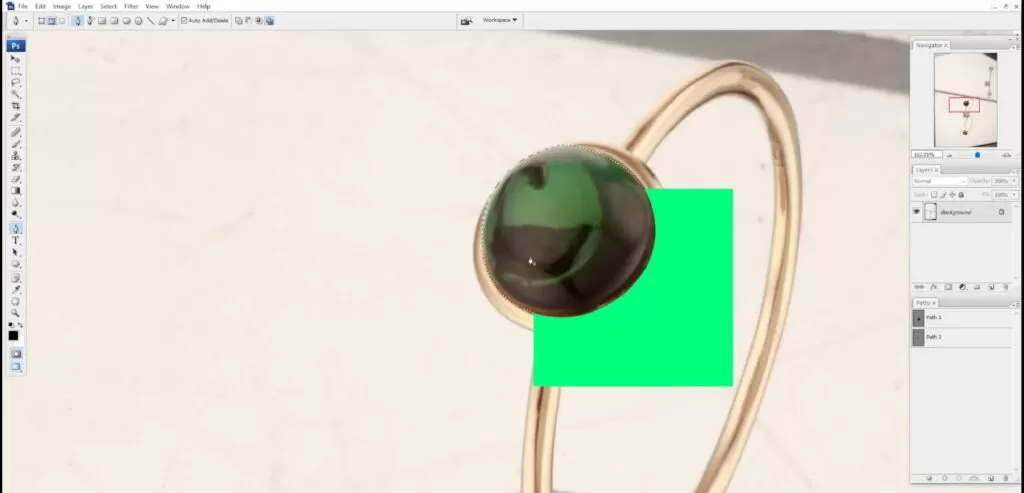
The process of creating numerous distinct pathways or selections inside an image is known as multiple clipping paths, also known as multi-path or color paths. Each path represents a different part or aspect inside the image. These pathways are designed to separate and independently edit different areas of the picture.
Multiple clipping path service providers are mostly used to enable complex and accurate editing of various parts inside a single picture. This method is frequently employed to keep the overall composition intact while doing intricate color tweaks, retouching specific components, or applying various effects to separate places.
How to Create Multiple Clipping Paths in Photoshop
Photoshop takes careful layering and path organization to create Multiple clipping path services:
Layering and Organizing Paths
For each element you wish to isolate, create a new layer in Photoshop after opening the image.
Make trails around the corresponding items in each layer using the Pen Tool.
For clarity and convenient reference, give each layer the proper name and label.
To get the required choices, adjust the path’s characteristics as necessary.
Managing Complex Selections
Create distinct pathways for each piece to retain independence while dealing with complicated choices that overlap or interact with one another.
Use layer masks and blending modes to adjust the interactions between elements while keeping their distinct characteristics.
Conclusion
In conclusion, clipping paths are a crucial tool for image editors, graphic designers, and companies across a range of sectors. Adopting this method and remaining current with image editing technologies will enable designers to produce excellent visual content and react to the always-changing context of design and marketing.
We hope this essay satisfies all of your demands. Those that continue to investigate the possibility of clipping path services and technologies will have interesting prospects in the future. So read and remain connected.

